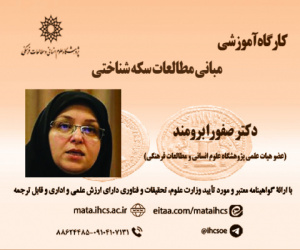جایگاه تاریخی تصویرسازی هستی شناسانه صدرایی در طبقه بندی [جدول] فضایل و رذایل (در تناظر با تحلیل قوای نفس) (مقاله علمی وزارت علوم)
درجه علمی: نشریه علمی (وزارت علوم)
آرشیو
چکیده
مقاله حاضر با استقصا تصویرسازی های متعدد ملاصدرا، از طبقه بندی فضایل و رذایل (متناظر با طبقه بندی قوای نفس) با نوعی رویکرد تطبیقی-تاریخی، به تحلیل هستی شناسانه مبانی و نوآوری های خاص صدرا در تحلیل فضایل معطوف است تا در نهایت جایگاه تاریخی دیدگاه وی را نیز از میان انواع طبقه بندی ها تحلیل نماید. ملاصدرا، در آثار خویش سه نوع طبقه بندی از فضایل و رذایل ارائه داده است: 1) تقسیم دوتایی: براساس دو فضیلت حکمت (قوه عالمه) و حُریّت (قوه عامله)؛ 2) براساس قوای چهارگانه انسان (بهیمی، سبعی، شیطانی و ملکی)؛ 3) تقسیم فضایل براساس رویکرد افلاطونی-ارسطویی. در این مقاله علاوه بر توصیف طبقه بندی های صدرا از فضایل و تحلیل جایگاه تاریخی نظریه وی، نوآوری های دیدگاه او در تحلیل هستی شناختی فضایل نیز رصد شده است. بستر تحقق فضیلت نزد صدرا، با تأثیرپذیری از قانون «وسط» ارسطویی، در مفهوم هستی شناختی وسط، با توضیحی از روایت «فخیر الأمور أوسطها» آمده است. مبانی نوآورانه هستی شناختی صدرا، بسان اصالت وجود، حرکت جوهری و ...، سبب شده که وی فضایل را، به شدت وجودی و هستی شناختی فرد تحلیل کند و نه آنکه صرفاً، صفات و عوارضی زودگذر باشد. ریشه های وجودی تحقق فضایل، نظیر سرشت، فطرت و اکتساب نیز، در این تحلیل اهمیت دارد مثلاً تقسیم دوتایی وی، برمبنای فطریات و ویژگی های ابتدایی وجودی فرد است که با تحلیل وجودی استکمال انسان متلائم است. تقسیم چهارتایی ملاصدرا نیز، با تکیه بر فطرت ثانی و حرکت جوهری است.Historical Significance of Mullā Ṣadrā’s Ontological Approach To Classifying Virtues and Vices: A Analogy of the Faculties of the Soul
The present study aimed to thoroughly investigates Mullā Ṣadrā’s ontological approach to the classification of virtues and vices. To this end, the historical origins and development of these classifications were examined to detect the historical significance and contributions of Mullā Ṣadrā’s perspectives. Following the Platonic-Aristotelian paradigm, Islamic philosophers have frequently analyzed virtues and vices analogous to the faculties of the soul. Accordingly, Mullā Ṣadrā’s classification of virtues was analyzed in correspondence with an ontological approach to analyzing the faculties of the soul. In his work, Mullā Ṣadrā’ adopted three distinct approaches to the classification of virtues and vices: (1) Binary Model, with a focus on the virtues of ḥikmah (intellectual virtue) and ḥurriyyah (practical virtue); (2) Fourfold Model adressing the four human faculties—bestial, predatory, satanic, and angelic; and (3) Platonic-Aristotelian Model, with virtues and vices being classified as intellectual, appetitive, and irascible faculties of the soul, allowing for a systematic tabulation of virtues and vices. Mullā Ṣadrā’s analysis of the faculties of the soul draws on Avicenna’s Al-Shifāʾ and Al-Ishārāt as well as Fakhr al-Dīn al-Rāzī’s Al-Mabāḥith al-Mashriqiyyah; however, his approach to this classification bears a stronger resemblance to the ethical framework of Aristotle’s Nicomachean Ethics. In this regard, as inferre by mystics and spiritual elites, Ṣadrā’s analysis of the faculties of the soul does not functionally align with the tabulated classification of virtues and vices. His classification, to a broader extent, corresponds to the approach of Muslim thinkers such as Ṭūsī; however, it is distinct—despite certain connections—from Aristotle’s classification of virtues.







